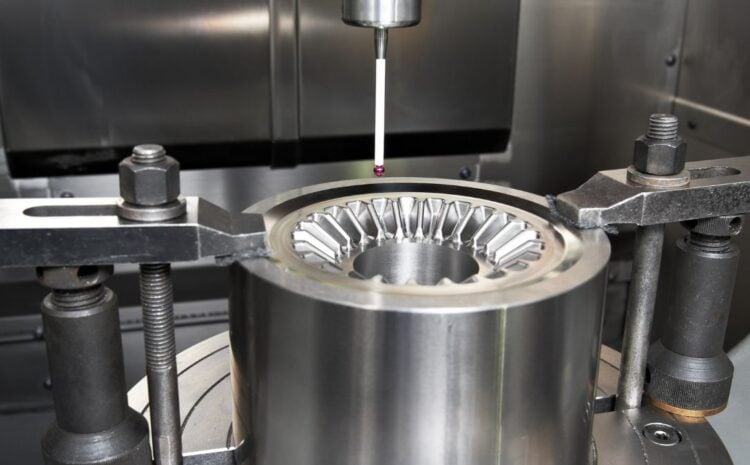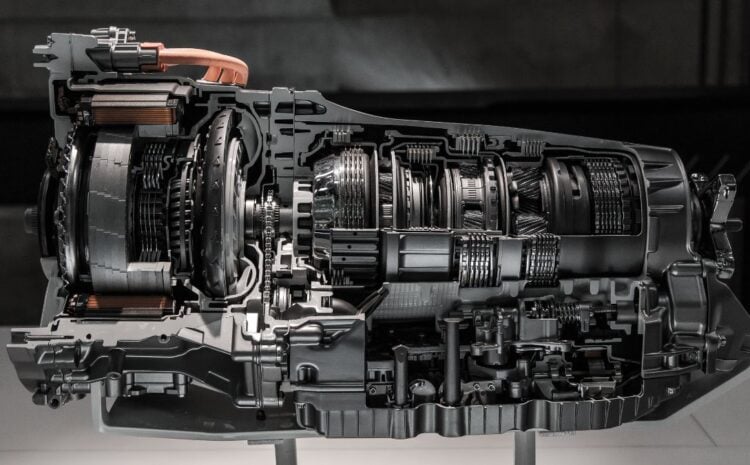Worm gears are a common type of gear used to move power from one place to another. A worm (or screw) that meshes with a worm wheel makes up these gears. The worm wheel is a cylindrical gear with teeth that mesh with the worm thread, and the worm has a screw-like helical thread. Worm gears are frequently utilized in applications where precise speed control is needed, and space is at a premium because of their capacity to deliver excellent torque at low speeds. This article will discuss how worm gears work and how they are made.
Worm Gear Function
Power transfer from one component to another is the primary purpose of worm gears. A motor or other power source powers the worm, which rotates and turns the worm wheel. The worm thread rotates as a result of the teeth of the worm wheel engaging with it. The worm wheel’s tooth count and worm thread pitch work together to define the reduction ratio between the worm and the worm wheel. Worm gears are a fantastic option for applications that call for high torque and low speed because the gear ratio is typically between 10:1 and 60:1.
Worm gears can offer a significant amount of speed reduction in a small package, which is one of their benefits. Because they can generate a lot of torque at low speeds, they are perfect for applications with little space. They are ideal for applications where the gear needs to be retained in a precise position since they also contain a self-locking feature that prevents the gear from turning backward.
Worm gears do have certain drawbacks, though. One is that they are less effective than other kinds of gear, including helical or spur gears. The worm gear’s thread has a helix angle that causes a sliding motion between the worm and the worm wheel teeth, increasing friction and decreasing power transfer efficiency. Worm gears also have the drawback of not being appropriate for high-speed applications due to heat damage to the gear teeth caused by the worm and worm wheel sliding motion.
Worm Gear Manufacturing Process
Depending on the size and complexity of the gear, a variety of manufacturing procedures are used to create worm gears. Typically, the following steps are included in the manufacturing process:
- Material Selection: The material used for worm gears is usually steel, bronze, or cast iron. The selection of material depends on the specific application and the desired performance characteristics.
- Worm Cutting: The procedure of hobbing is commonly employed to create worms. At this step, a tool is used to cut the worm thread into the blank. The hobbing procedure is comparable to milling, but it makes use of a unique tool that is shaped like a worm thread.
- Worm Wheel Casting: A casting method is commonly used to create the worm wheel. The gear is made by pouring molten metal into a mold that has been constructed in the proper shape.
- Machining: Following the casting stage, the gear is machined to get its final shape. To do this, the gear teeth must be drilled appropriately, bored, and shaped.
- Heat Treatment: The worm gear is heat-treated to increase its tensile strength and longevity. The gear is heated to a certain temperature in the heat treatment procedure and then carefully cooled.
- Surface Treatment: This technique is the last stage before manufacturing is complete. To increase the gear’s performance and durability, this may entail polishing, grinding, or coating.
Worm Gear Applications
Worm gears have a wide range of uses in the automotive, industrial, and aerospace sectors. They are frequently employed in conveyor systems, where they are utilized to transmit power from the motor to the belt or chain. Together with winches and cranes, they are frequently utilized in lifting and hoisting systems.
Worm gears are utilized in power steering systems in the automotive industry, where they offer accurate speed control and minimal noise. They are also utilized in gearboxes and transmissions, where they aid in generating a lot of torque.
In the aerospace sector, worm gears are utilized in the landing gear systems of airplanes. Moreover, they are used in the actuation systems of the wings and to control aircraft surfaces.
Maintenance and Troubleshooting
Worm gears need to be properly maintained in order to last a long time and deliver consistent results. Proper lubrication is the most important aspect of maintenance. Worm gear-specific grease or oil of the highest caliber should be used to lubricate the gear. Regular lubrication applications should be made, and the gear should be cleaned before each application.
The teeth of the gears can wear down, which is one of the most frequent problems that can occur with worm gears. This may be brought on by inadequate lubrication or heavy weights placed on the gear. The performance of the gear will decline as the teeth wear, and it will emit a loud whine. Although the teeth can sometimes be fixed or replaced, most of the time, the complete gear needs to be changed.
Overheating is another potential problem. Lack of lubrication, high loads, or rapid operation can all result in overheating. The lubrication may break down due to the gear overheating, which could worsen the issue. The gear’s failure may result from the teeth warping or deforming due to overheating.
Conclusion
As a result of their ability to deliver high torque at low speeds in a compact design, worm gears are a crucial part of many power transmission applications. They are frequently utilized in landing gear, power steering, lifting and hoisting, and conveyor systems in airplanes. Worm gears are less effective than other types of gears and are not recommended for high-speed applications, but they have special benefits that make them the best option for many applications. For them to perform consistently and last a long time, proper upkeep and lubrication are essential. For people working in the industrial sector, it is essential to comprehend how worm gears are made and how they work. This article has given you some helpful information about this important gear type.



